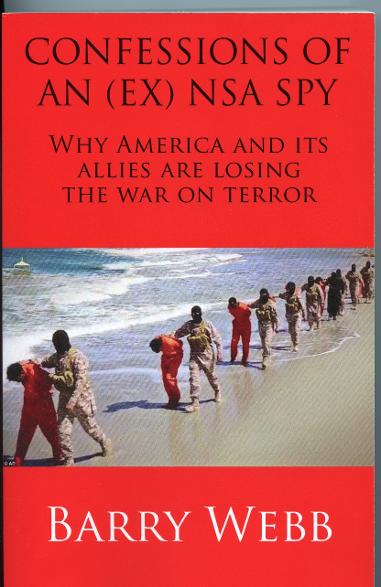WAS NABU NA’ID SOLOMON? (Posted 25 July 2011)
The issue of who King Solomon was has plagued Biblical scholars for decades. While this personage is attested to in the Old Testament there is no mention of such a person in any contemporary sources—even though many of Israel’s and Judah’s later kings are attested to in contemporary sources. Equally problematic is that there is no archaeological evidence of a large Israelite state as described by the Bible at the time King “Solomon” was supposed to have lived (10th century B.C.). As a result a number of archaeologists who specialize in Ancient Israel have expressed doubts that there ever was a king “Solomon.” (Tubb, Jonathan, "Israel’s First Kings" in World Archaeology, pp. 19-21).
KING DAVID’S REALITY
That there was a king David is near certain because of subsequent inscriptions (namely the tell Dan stela and Mesha stela) referring to a “house of David,” as being rulers of Israel (Kitchen, K.A., On the Reliability of the Old Testament, p. 615). “David” (Semitic variants include Dawid, Dod, Tod, Tad, and Da’oud) is also a legitimate name occurring as a component in “Apiru” Canaanite names mentioned in the Amarna letters of the 14th/15th century B.C. and as components of Hyksos/Canaanite names in 16th/17th century B.C. Egypt. The name “David” (as Dawid) is noted as far back as the tablets of Ebla dating to 2500 B.C. (Bermant, Chaim, and Michael Weitzman, "Ebla," p. 184). So, though we have no archaeological or extra-Biblical literary evidence for an historical king “David,” one probably did exist, given the evidence, and given that the name was a broadly used and very popular name throughout the entire Northwest Semitic spectrum, of which the nation of “Israel” comprised only a small part. Nonetheless, the time of “David’s” rule and the extent of his realm are open to question (Miller, J. Maxwell and John H. Hayes, "A History of Ancient Israel and Judah," p. 206).
THE PROBLEM WITH “SOLOMON.”
However, “Solomon” is another matter all together. The name itself raises serious questions since it does not appear anywhere else in the pre-exilic Ancient World. The root of that name is S-L-M, which in Arabic and proto-Semtic meant “peace.” The modern Hebrew equivalent would be SH-L-M. The “on” that appears at the end of the name “Solomon” Has always been taken to be a remnant of the nominative case nunation as found in Arabic nouns, and at one time in pre-Biblical Hebrew nouns (compare also “Samson” from shamash the Sun God with "on" nominative case nunation). The modern Hebrew form of the name “Solomon” is “Sholomo,” and it appears in that form in the Modern printings of the Hebrew “tanakh” without the nunation. But there is no “Sholomo” or Solomon, or S-L-M, or SH-L-M in the Ebla tablets, or in the Amarna letters, or in any other collection of ancient North West Semitic or Near Eastern writings or collection of names. It therefore seems strange that “David,” or any other pre-ninth century king of Israel would have named one of his sons “Solomon,” or “Sholomon.”
LATER RENDITIONS OF THE NAME
That being said, the name “Shallum” (without the nunation) does appear in the book of Jeremiah as applied to persons living in the late 7th and early 6th centuries B.C. However, there still is no evidence of any variant of the name appearing as early as the 10th century B.C. Also, this does not explain how the variant “Solomon” showed up in post-classical western translations of the Old Testament. Perhaps western translators confused “Shlomo,” or “Shallum,” with “Solon” an early 6th century B.C. Athenian Archon and lawmaker renowned for his wisdom. That would explain the archaic, and Arabic-looking SLM + nunation (Solomon), as not being archaic and nunated at all, but rather a compilation of two different names for two different people.
SIZE OF REALM
However, even if there was an historical “Solomon” who ruled an Israel in the 10th century B.C., as the conventional accounts say, his realm would have been rather small (Miller and Hayes, p. 206). The mighty empire of “David” and “Solomon” as described in the Bible did not occur until the reign of king Omri in the 9th century B.C. (Tubb, pp. 19-21). Had such a huge empire existed it would certainly have been mentioned in Babylonian, Assyrian, or Egyptian sources of the same time period. However, unlike Omri’s kingdom (which was mentioned by non-biblical contemporary sources), the kingdom of David and Solomon was not mentioned by any of the surrounding cultures.
It follows then, that even if there were an historical “Solomon” in the 10th century B.C., he would not have been important enough to have been visited by distant foreign rulers such as the Queen of Sheba. He would not have been powerful enough, or have had any reason, to have built a Red Sea naval base at Etzion Gaber, nor would he have possessed the so-called “mines of Solomon” often attributed to be the "mahad azh-zhahab" (Cradle of Gold) of western Arabia. “And the navy also of Hiram, that brought gold from Ophir . . .” (I Kings 10:11). Ophir is usually identified with west central Arabia, or the area of Yathrib and the "mahad azh-zhahab."
“SOLOMON’S” GLASS FLOOR
There is another question concerning the glass floor of “Solomon’s” throne room that was so clear that the Queen of Sheba thought it was water when she first visited “Solomon” and was ushered into his presence: “It was said unto her: Enter the palace. And when she saw it (the floor) she deemed it to be the depth of the sea and she barred her legs (making ready to cross the water). Solomon said: Lo! It is a palace faced with glass.” (Qur’an 27:44). The question this raises is whether or not the science of manufacturing glass was advanced enough by the 10th century B.C. to be able to produce that effect. It was certainly advanced enough by the 6th century B.C., but not the 10th.
THE LAST KING OF BABYLON
Enter Nabu Na’id. The research for and writing of the Trilogy dealing with Nabu Na’id’s seventeen-year rule, and particularly his ten years in Arabia, presented so many parallels with the Biblical “Solomon” that I had to do a double take almost giving myself whiplash they were so startling.
THE QUEEN OF SHEBA
We have already mentioned the lack of extra-Biblical evidence for a king of Israel named “Solomon.” Another issue that has given Biblical scholars hemorrhoids for decades, if not centuries, is the matter of the Queen of Sheba’s visit. Even if “Solomon’s kingdom was as powerful and extensive as the Biblical accounts seem to imply, it is a real stretch to imagine the Queen of Sheba traveling all the way from the southern tip of Arabia (where her kingdom was located) to Jerusalem, a distance of 1500 miles. For starters, even if “Solomon’s” kingdom was important enough and powerful enough to warrant a visit by other heads of state, the kingdom of Sheba in the 10th century was not important enough to warrant having its ruler make a trip of such length. Sheba in the 10th century B.C. was only a fledgling state and would not have had such far-reaching international interests and connections. However, by the 6th century B.C., the time of Nabu Na’id, Sheba/Saba’ in southwest Arabia was an empire extensive enough and powerful enough to warrant such international interests and contacts (see Clapp, Nicholas, "SHEBA," and Doe, Brian, "Monuments of South Arabia," pp. 105-169).
BOOK OF JOB EXPLAINS
In unraveling this mystery we are helped out, by of all sources, the Bible itself. The book of Job mentions that Job and his people and possessions were being harassed by both the Babylonians (sometimes called Khaldeans) and the Sabaeans (the Arabic term for the people of the Biblical “Sheba”). (Please refer to the essay on “Job” for details on the Babylonian/Sabaean friction during the mid 6th century B.C.). The passages in the book of Job indicate that the empires of Babylon and Sheba/Saba’ were rubbing up against each other in the mid sixth century B.C. Such a situation would have warranted a visit by the ruler of Sheba/Saba’ (be it a Queen or a King) to the Babylonian ruler to hash out the border issues and work out their international relations—especially if that Babylonian ruler was headquartered in Tayma, Arabia as Nabu Na’id was during the mid sixth century B.C. It is well-known that Nabu Na’id, as king of Babylon, moved his capital to Tayma for the ten-year period of 552-543 B.C. This is attested to not only in the Babylonian Chronicles but by writings of Nabu Na’id himself and by the archaeological evidence on the ground in Tayma. A trip by the queen of Sheba to Tayma during the mid-sixth century B.C. makes a lot more sense than does a trip from Sheba to Jerusalem in the 10th century B.C. logistically, strategically, geographically, historically, economically, and from any other standpoint one wants to look at the matter.
THE GLASS TEMPLE
In this regard it is interesting to note that during Neo-Babylonian times the "HAY ZIDA" temple to the God Nabu in Borsippa had a pure glass surface. That is, the outer bricks were of pure glass, and these outer bricks of pure glass covered the regular mud and clay bricks that formed the core of the temple (Oppenheim, A.L., R.H. Brill, and A. von Saldern, "Glass and Glass Making in Ancient Mesopotamia"). In other words, were Nabu Na’id to build a Temple, a palace, or throne room in Tayma wherein the floor was made of class bricks he would only be following a custom already in established in Mesopotamia. Whereas for a king of Israel in the 10th century B.C. to build a palace floor out of glass (as the Qur’an story indicates) would be highly anachronistic.
THE GOLD MINES
Of interest also is the fact that the above-mentioned gold mines of "mahad azh-zhahab" (the so-called “mines of Solomon”) are situated precisely in the area (near Yathrib, modern Medina) that would have been in dispute between a Babylonian Empire centered in Tayma and the kingdom of Sheba/Saba’ centered in Yemen. Additionally, a Babylonian Empire holding vast areas of western Arabia as far south as Yathrib (as the Babylonian accounts indicate) would have had great need for maritime contact with the Levant. A port at Etzion Gaber would have been most logical and probably necessary. The Babylonians, being a great land power, had no naval expertise themselves so they would have had to turn to the Phoenicians, who at that time were vassals to Nabu Na’id. It so happens that the king of Tyre during Nabu Na’id’s time was named Hiram, which is the name the Bible gives for the king of Tyre during “Solomon’s” time who provided the ships for the port at Etzion Gaber. These coincidences were too startling to ignore. Could the writers of the Biblical “Solomon” stories, writing in the 5th or 4th (or even the 3rd) century B.C. gotten the two Phoenician Hirams mixed up? (Since there was also a 10th century king of Tyre named Hiram. The Hiram of Nabu Na’id’s time was the third Hiram to rule in Tyre).
THE WISE KING
And now for the coup’ de grace’. In the British museum there is a clay tablet once belonging to a 5th century Babylonian healer. The cuneiform writing refers to a legendary ruler called "ABAKANANA" or "ABAQANANA" in the cuneiform. This "ABAQANANA," or “father of wisdom/father of law,” is likely some legendary ruler renowned for his wisdom and temporal power (Finkel, I.L. and M.J. Seymour, "Babylon," p. 163). The illustration that accompanies the writing shows this "ABAQANANA" as a late Babylonian king and is virtually identical to the depiction of Nabu Na’id on the Nabu Na’id stela holding the same ringed staff, wearing the same robe, and the same cup-shaped, or conical, crown. There is, of course, no “smoking gun” type of proof that this “father of wisdom” was in fact Nabu Na’id, but when one takes into consideration Nabu Na’id’s well-known love for archaeology and history it certainly adds up. Of interest for the topic of this essay is that Biblical, Judaic, and Arabic traditions have always ascribed great wisdom to “Solomon.” In this regard, bear in mind also that the authors of the Bible were highly influenced by the surrounding Babylonian culture, particularly its literature and myths as noted in the previous essays on “Adam and Eve,” “The Garden of Eden,” “The Flood Story,” and the “Tower of Babel.”
WRITERS OF BIBLE AND QUR’AN MIXED AND MATCHED
Now, given that the Biblical stories about “Solomon” were all written a century or three after the time of Nabu Na’id, it becomes easy to see how the Biblical writers (and consequently the even later writers of the Qur’an) could have adopted many of the stories about Nabu Na’id, his legendary wisdom and power, his relations with Hiram, king of Tyre, their joint naval presence at Etzion Gaber and long-distance trading ventures by sea, as well as Nabu Na’id’s contacts with the Queen of Sheba, the glass floor of his throne room, and his possession of Gold mines in western Arabia, and then adapted them and ascribed them to their own legendary, if entirely mythical, ruler whom they called “Shlomo,” (in Hebrew) or “Sulayman” (in modern Arabic).
BORROWED STORIES
Indeed, it is a well-known fact that the writer(s) of the Book of Daniel borrowed the story of Nabu Na’id’s ten-year sojourn in Arabia, distorted it, denigrated it, and then attached it to king Nebuchadnezzar (Please refer to the Essay on the Book of Daniel). So why couldn’t they (the writers of I kings) have taken certain other (positive) stories about Nabu Na’id and attached them to one of their own mythical rulers of a bygone age as a way to inflate the importance of their own history?
For more information visit www.nsaconfessions.com

What are the long-term, overarching historical laws and trends that tell us the West is doomed?
Why is "Climate Change" not a national security issue, but the hysteria over it is?
What intelligence failures, if any, led to 9/11, the Boston Marathon bombing, San Bernadino, and other terrorist acts on our soil?
Why did we turn Iraq over to the Iranians?
Why did we go into Iraq in the first place?
Did we create ISIS? If so, Why?
Why do virtually all Middle Easterners across the board think that the U.S. is a major sponsor of terrorism?
Is Islam truly a "religion of peace?"
Why does Washington exert such Herculean bipartisan efforts to misunderstand these issues?
What are the Islamic prophecies driving recruitment for groups like ISIS and al-Qaeda?
Why driving ISIS from the battlefields of the Middle East will not be the end of the war on terror, no matter what our government says.
All of these issues and much more are discussed in this, the only counter-terrorism book on the planet that pulls it all together and connects all the dots.
www.amazon.com and www.barnesandnoble.com

BACK FLAP for "THE ALEPPO FILE"
Faced with cratering poll numbers, a U.S. president agrees to a plot having Islamic radicals kidnap an ambassador so he can "negotiate" his release in turn for the "Blind Shaykh," currently in prison for the 1993 World Trade Center bombing. The president hopes that the Blind Shaykh's return to Egypt will strengthen the hand of the Muslim Brotherhood to corral Islam's more radical terrorist groups and unite all Sunni Muslims with Turkey in a resurrected Ottoman Empire aimed at keeping the Russian bear caged. But when the kidnap operation falls apart and four Americans are killed at the U.S. consulate in Aleppo, the administration goes into full cover-up mode. Only undercover agent Matt Nolan knows the full truth of what happened in Aleppo--placing him number one on the Administration's enemies list. As Russia threatens war over the Ottoman Empire plot, Matt has to dodge numerous assassination attempts in his desperate effort to return to the U.S. to testify before Congress, put a stop to the Ottoman Empire plot, and defuse WWIII.
For more information, please visit the book's website at: www.thealeppofile.com
To purchase the trade paperback version please go to www.amazon.com
Kindle and Nook versions are also available.
ALSO NOW AVAILABLE:

What if an ancient table was discovered that undermined the foundations of both Christianity and Islam while giving instructions for re-awakening an older god, a god who exacts frightful revenge while promising a utopia of eternal life, peace, and vast knowledge—in return for absolute devotion and loss of free will?
What if that “god” was an artifact buried just under the surface of the moon supposedly by an ancient space-faring race? What if the president of the United States had a Messiah complex and staged his own “assassination” and “resurrection” three days later in order to become the “son” of that new/old “god” on the moon?
Matt Nolan and his colleagues in the U.S. Intelligence Services have only a limited amount of time to uncover the secrets of the resurrected artifact and find a means for destroying it and corralling the president—before they themselves are destroyed.
Is it the rapture that Evangelicals have been praying for?
Is it the new heaven and the new earth prophesied in both the Bible and the Qur’an?
Or, is it the anti-Christ? The Beast of Revelations? The great blaspheme? The abomination that maketh desolate?
Or, is it something else even more sinister?
THE JERICHO TABLET serves up a captivating mixture of ancient Near Eastern history, religion, and linguistics to go along with its modern day spy craft, political intrigue and corruption, media collusion, and science—while entertaining the reader with a fast-paced plot.
For more information, please visit the book's website at: www.thejerichotablet.com
To purchase, please click on: www.amazon.com / Books / The Jericho Tablet